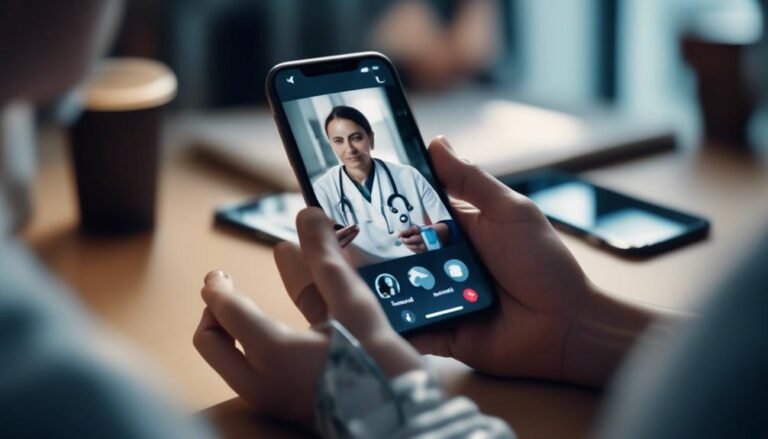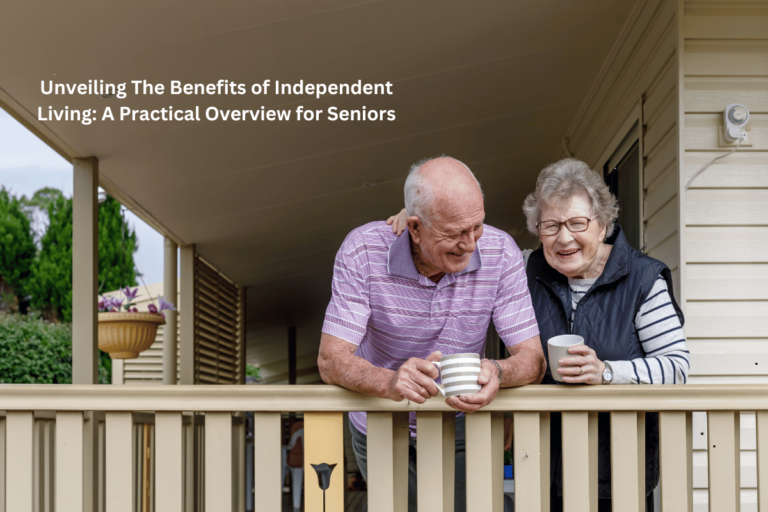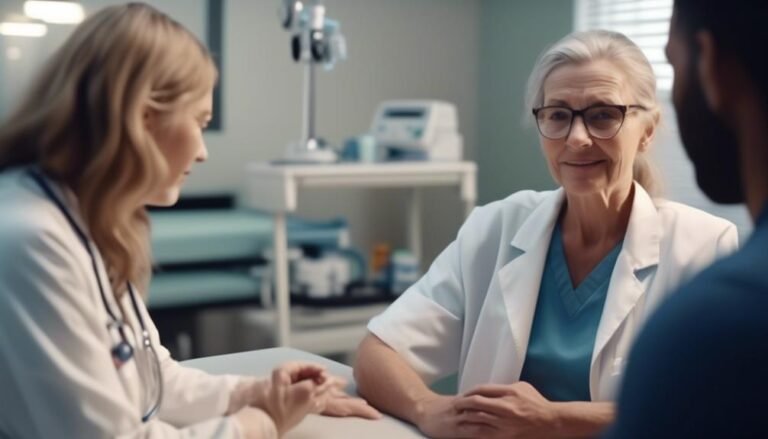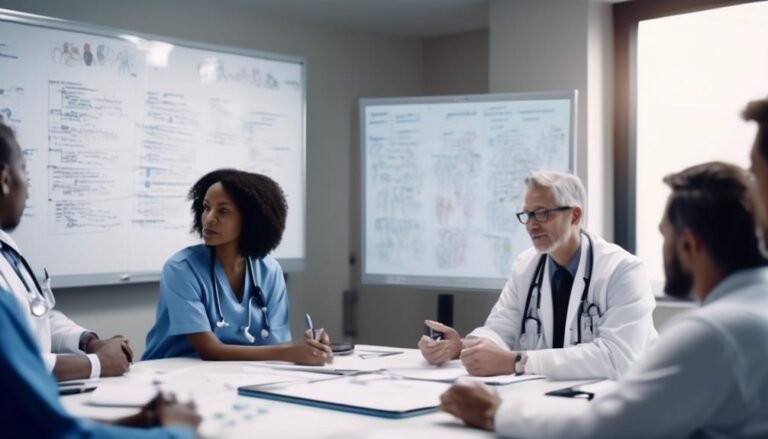Implementing Effective Communication Strategies in Patient Care
Effective communication is a cornerstone of quality patient care, influencing every aspect of the healthcare experience. From building trust and rapport to ensuring accurate information exchange, effective communication is vital for positive patient outcomes.
However, healthcare professionals often face various barriers that hinder their ability to communicate effectively with patients and among interdisciplinary teams.
In this discussion, we will explore the importance of implementing robust communication strategies in patient care, address common barriers, and delve into practical approaches to enhance communication for improved patient satisfaction and health outcomes.
Key Takeaways
- Effective communication is crucial for delivering high-quality and patient-centered healthcare.
- Barriers to effective communication, such as cultural differences, language barriers, and limited health literacy, should be recognized and addressed.
- Building trust and rapport with patients through active listening, empathy, and nonverbal cues is essential for effective communication.
- Leveraging technology, such as electronic health records and telehealth services, can enhance communication efficiency and patient satisfaction.
Importance of Communication in Patient Care
The significance of effective communication in patient care cannot be overstated, as it plays a pivotal role in ensuring the delivery of high-quality and patient-centered healthcare. Communication impact is profound, influencing various aspects of patient care, including their understanding of medical conditions, adherence to treatment plans, and overall satisfaction with the healthcare experience.
Effective communication fosters a therapeutic environment where patients feel heard, valued, and empowered to actively participate in their care.
Furthermore, patient satisfaction is intricately linked to communication in healthcare settings. When healthcare professionals communicate clearly and empathetically, patients are more likely to feel reassured, understood, and involved in their treatment journey. This, in turn, can lead to improved adherence to medical advice, better health outcomes, and enhanced overall satisfaction with the care received.
Conversely, poor communication can result in misunderstandings, increased anxiety, and reduced satisfaction among patients.
Barriers to Effective Communication
In addressing the complexities of patient care, it is essential to recognize and navigate the barriers that can impede effective communication between healthcare professionals and their patients. Overcoming these barriers is crucial to improving outcomes and ensuring that patients receive the best possible care.
Some of the most common barriers to effective communication in healthcare settings include:
- Cultural Differences: Patients from diverse cultural backgrounds may have unique beliefs, values, and communication styles. Healthcare professionals need to be aware of and sensitive to these differences to ensure effective communication and understanding.
- Language Barriers: When patients and healthcare providers do not share a common language, it can significantly impede effective communication. This barrier can lead to misunderstandings, misdiagnoses, and inappropriate treatments.
- Health Literacy: Patients with limited health literacy may struggle to understand medical instructions, terminology, and treatment plans. This can hinder their ability to actively participate in their care and make informed decisions.
Recognizing and actively addressing these barriers is essential for healthcare providers to deliver patient-centered care and achieve positive health outcomes.
Building Trust and Rapport
Effective communication in patient care hinges on the establishment of trust and rapport.
This can be achieved through the demonstration of empathy and understanding, as well as the recognition of nonverbal communication cues.
These foundational elements lay the groundwork for building strong, meaningful connections with patients, ultimately fostering a more effective and holistic approach to their care.
Establishing Empathy and Understanding
Using active listening and nonverbal cues to convey empathy and understanding is essential in establishing trust and rapport with patients in healthcare settings. To effectively establish empathy and understanding, healthcare professionals should:
- Practice active listening: By paying full attention to the patient's words, tone, and body language, healthcare providers can better understand the patient's perspective and respond with empathy.
- Use empathetic responses: Responding with empathy, such as acknowledging the patient's emotions and validating their experiences, helps to build a strong rapport and trust.
- Employ nonverbal cues: Nonverbal communication, such as maintaining eye contact, nodding, and using appropriate facial expressions, can convey understanding and empathy, leading to a more meaningful patient-provider interaction.
Nonverbal Communication Cues
Establishing empathy and understanding through active listening and empathetic responses lays the foundation for utilizing nonverbal communication cues to build trust and rapport in patient care settings. Nonverbal communication, including body language, facial expressions, and tone of voice, plays a crucial role in conveying empathy and understanding to patients. Healthcare professionals need to be attuned to cultural differences and gender dynamics that may influence nonverbal cues. For instance, certain gestures or expressions may carry different meanings across cultures, and individuals may respond differently based on their gender. By being mindful of these factors, healthcare providers can ensure that their nonverbal communication aligns with the patient's needs and preferences, ultimately contributing to a more trusting and respectful patient-provider relationship.
| Nonverbal Communication Cues | Description |
|---|---|
| Body Language | Gestures, posture, and physical movements |
| Facial Expressions | Emotions conveyed through facial cues |
| Tone of Voice | Pitch, volume, and intonation |
| Cultural Differences | Varied interpretations of nonverbal cues |
| Gender Dynamics | Impact of gender on nonverbal communication |
Communicating With Empathy
In the context of patient care, communicating with empathy is essential for establishing a supportive and understanding environment.
This involves honing empathetic listening skills to truly comprehend the patient's concerns and emotions.
Additionally, being attuned to non-verbal cues can provide valuable insights into the patient's state of mind and contribute to a more empathetic form of communication.
Empathetic Listening Skills
Demonstrating empathetic listening skills is essential in establishing a compassionate and supportive rapport with patients in a healthcare setting. This involves active listening, where the healthcare provider fully concentrates, understands, responds, and remembers what the patient is communicating.
Additionally, emotional intelligence plays a crucial role in empathetic listening, as it enables the healthcare provider to recognize and understand the patient's emotions, thus responding with empathy and support.
To effectively demonstrate empathetic listening skills, healthcare professionals should also strive to create a safe and non-judgmental environment for patients to express their concerns and feelings openly.
Moreover, it is essential to practice empathy by acknowledging the patient's emotions and validating their experiences, thereby fostering trust and a sense of understanding in the patient-provider relationship.
Non-Verbal Cues Awareness
To further cultivate a compassionate and supportive patient-provider relationship, healthcare professionals must attentively observe and interpret non-verbal cues as a means of communicating with empathy. This involves body language awareness and emotional expression recognition. By being sensitive to non-verbal cues, healthcare providers can gain valuable insights into a patient's emotional state, level of comfort, and understanding. This awareness facilitates the delivery of more personalized and empathetic care. The following table illustrates some common non-verbal cues and their potential interpretations:
| Non-Verbal Cue | Potential Interpretation |
|---|---|
| Crossed arms | Defensive or closed-off attitude |
| Fidgeting or restlessness | Anxiety or discomfort |
| Maintaining eye contact | Attentiveness and engagement |
| Nodding | Agreement or understanding |
| Facial expressions | Conveyed emotions such as pain, sadness, or confusion |
Enhancing Patient Education
An essential component of effective patient care involves enhancing the delivery of educational information to patients. This can be achieved through various strategies that aim to promote patient engagement and understanding.
- Interactive Educational Sessions: Providing interactive educational sessions allows patients to actively participate in their learning process. This approach encourages patient engagement and helps them retain information more effectively.
- Customized Instructional Materials: Tailoring instructional materials to suit the individual patient's needs can significantly enhance their understanding of healthcare information. This may include visual aids, simplified language, and personalized resources.
- Follow-Up and Reinforcement: Following up with patients after educational sessions and reinforcing key points can help solidify their understanding. This may involve providing additional resources, answering questions, and addressing any misconceptions.
Leveraging Technology for Communication
Utilizing modern technology in patient care can greatly enhance communication between healthcare providers and their patients. Technology integration in healthcare systems has revolutionized the way information is shared, leading to improved communication efficiency and ultimately, better patient outcomes. One of the key aspects of leveraging technology for communication is the use of electronic health records (EHRs), which allow for seamless information exchange among healthcare professionals. EHRs enable real-time access to patient data, ensuring that all members of the care team are well-informed and can communicate effectively with each other. Additionally, the implementation of secure messaging platforms and telehealth services further facilitates communication between providers and patients, particularly in remote or underserved areas. These technological advancements not only streamline communication processes but also contribute to increased patient satisfaction and engagement.
| Technology Integration | Communication Efficiency |
|---|---|
| Electronic Health Records | Real-time access to patient data, seamless information exchange |
| Secure Messaging Platforms | Facilitates communication between providers and patients |
| Telehealth Services | Improved access to care, particularly in remote or underserved areas |
Strategies for Interprofessional Communication
Effective interprofessional communication among healthcare teams is crucial for delivering high-quality patient care and ensuring optimal treatment outcomes. To enhance team collaboration and streamline patient care, healthcare professionals can employ the following communication techniques:
- Clear and Concise Communication: Team members should use simple language and avoid medical jargon when communicating with each other. This helps prevent misunderstandings and ensures that all team members, regardless of their specific roles, are on the same page regarding patient care plans.
- Regular Interdisciplinary Meetings: Scheduled meetings involving various healthcare professionals, such as physicians, nurses, pharmacists, and social workers, provide a platform for discussing patient cases, sharing insights, and coordinating care plans. These meetings promote collaboration, allowing each team member to contribute their expertise to the overall treatment strategy.
- Utilization of Communication Tools: Healthcare teams can benefit from using electronic health records (EHRs), secure messaging platforms, and other digital communication tools to share vital patient information efficiently. These tools facilitate real-time communication, enable quick decision-making, and ensure that all team members have access to updated patient data, ultimately improving the quality and continuity of care.
Conclusion
In conclusion, effective communication is paramount in providing quality patient care. Overcoming barriers and building trust and rapport are essential for successful communication.
Empathy and patient education play a crucial role in understanding and meeting the needs of patients.
Leveraging technology and implementing strategies for interprofessional communication can further enhance the overall patient experience.
How can we ensure that every patient receives the care and attention they deserve through effective communication?







